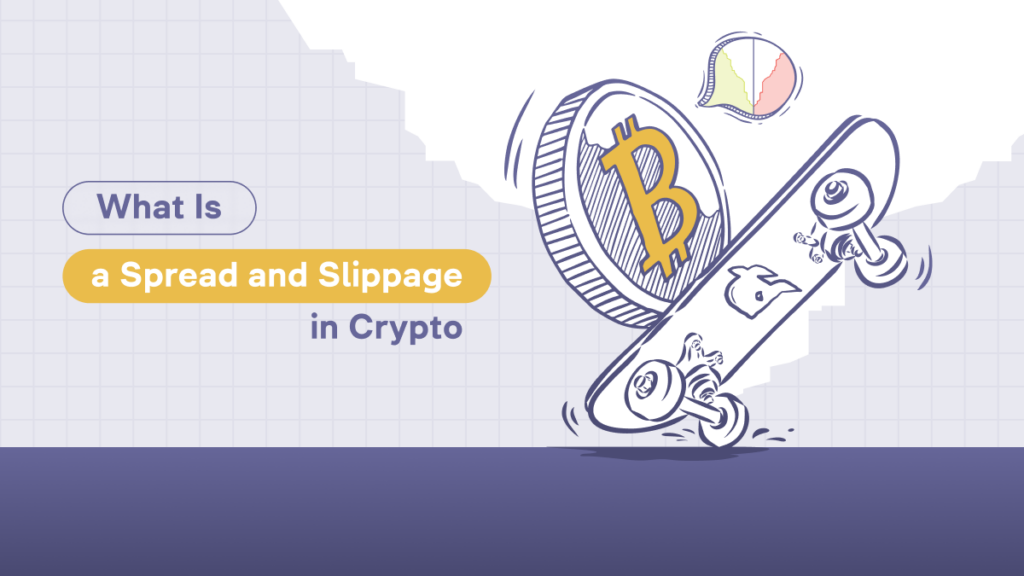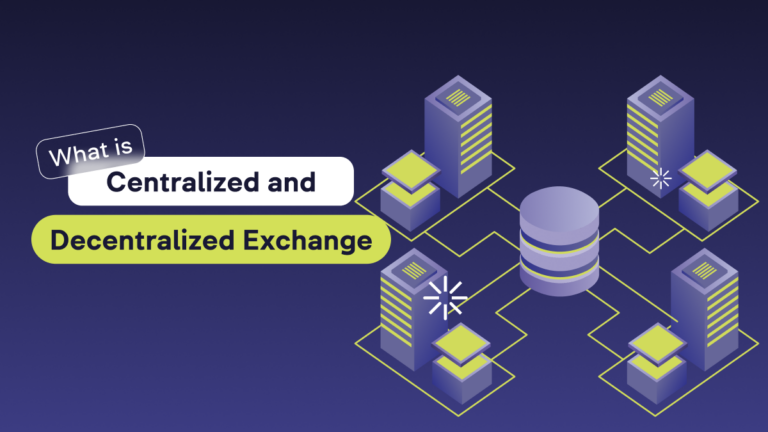What Is a Spread and Slippage in Crypto

Content
Understanding the concepts of spread and slippage is crucial for traders in cryptocurrency trading. Both spread and slippage are phenomena associated with market liquidity and specific cryptocurrencies. They can hinder traders from executing deals at desired prices, or even lead to losses. In this article, we will explore both concepts and how to mitigate the risks associated with them.
Slippage vs Spread
In cryptocurrency trading, the spread is the difference between an asset’s bid (buy) and ask (sell) prices. Liquid assets like Bitcoin typically have a smaller spread, resulting in a better price for market order execution. Conversely, less liquid assets have wider spreads, leading to greater price fluctuations for large orders.
Slippage, a discrepancy between a trade’s expected and executed price, frequently occurs in volatile or low-liquidity markets. It can be positive or negative, affecting the cost and outcomes of trades. Both spread and slippage are critical in understanding market dynamics, particularly in cryptocurrency markets’ fluctuating and diverse liquidity. In this article, we will talk mostly about crypto slippage.
What Is Slippage in Trading
In trading, slippage refers to the difference between a trade’s expected price and the price at which it is actually executed. This typically occurs in volatile markets or those with low liquidity. When a trader places an order, especially a large market order, the available liquidity might not be sufficient to fill the order at the expected price. As a result, the trade is executed at a different price, which can be higher or lower than anticipated. Slippage is a common occurrence in cryptocurrency trading due to the market’s inherent volatility and varying levels of liquidity across different assets.
What Is Slippage in Crypto Trading?
In crypto, slippage occurs when there is a discrepancy between the expected price of a trade and its actual price by the time order is executed. This happens mainly in volatile or low-liquidity markets.
The significant slippage in tradingcryptocurrency markets is often encountered on decentralized exchanges with low liquidity pairs. Due to slippage, an inexperienced trader may execute a large trade at a highly unfavorable rate and lose the entire value of the transaction.
Types of Slippage
Slippage in trading can be categorized into different types based on its nature and impact:
- Positive Slippage: This occurs when a trade is executed at a better price than initially expected. For instance, buying an asset at a lower price or selling it at a higher price than the order level benefits the trader.
- Negative Slippage: The most common type, where the execution price is worse than expected. For example, buying at a higher price or selling at a lower price than the intended order price results in a disadvantage for the trader.
- Liquidity-Related Slippage: This occurs in markets with low liquidity, where the lack of enough orders at the desired price level leads to orders being filled at different prices.
- Volatility-Induced Slippage: This happens due to high market volatility, where traders’ activity leads to a lack of liquidity and so to the discrepancy between the expected and executed prices.
Each type of slippage is influenced by factors like market volatility, liquidity, order size, and the speed of execution, all of which are particularly relevant in the cryptocurrency market.
Slippage example
As an example of slippage, crypto trading can be illustrated as follows: Imagine a trader wants to buy Bitcoin with a market order when its price is listed at $30,000. However, due to the cryptocurrency market’s high volatility and perhaps low liquidity at that moment, the order might not be filled at exactly $30,000. Instead, the order starts to fill at slightly higher prices, say at $30,050, $30,100, and so on, until the entire order is completed. As a result, the average price at which the order is filled turns out to be higher than the expected $30,000, say at $30,075. This difference in the expected and actual execution price, in this case, represents negative slippage, where the trader ends up paying more per Bitcoin than initially intended.
Strategies for Reducing Slippage Explained
Here are strategies on how to avoid slippage in trading.
- Limit Orders: Placing limit orders instead of market orders allows you to specify the maximum or minimum price at which you are willing to buy or sell, reducing the risk of unfavorable execution prices.
- Monitor Market Conditions: The slippage is bigger during the market volatility, while trading liquid assets can help mitigate slippage.
- Automated Systems: Using trading systems that automatically adjust to changing market conditions by using Limit orders and market orders when the slippage is minimal, which can help minimize slippage during currency conversion.
- Trusted Exchange: Trading on exchanges with higher liquidity and better infrastructure can reduce the likelihood of slippage.
These strategies emphasize the importance of planning, market analysis, and choosing the right trading platform to mitigate the risks of slippage. Trading without them can be risky.
Slippage in Different Cryptocurrencies
Slippage in crypto trading varies across different cryptocurrencies due to differences in liquidity and market volatility. Popular cryptocurrencies like Bitcoin and Ethereum, which have higher trading volumes and liquidity, typically experience less slippage compared to less popular or newer cryptocurrencies. This is because more liquid markets can better absorb large orders without significant price changes. Conversely, cryptocurrencies with lower liquidity can see more substantial slippage, as their order books are not deep enough to handle large orders without affecting the price significantly. Therefore, the likelihood and extent of slippage are directly influenced by the specific cryptocurrency’s market characteristics.
How to Calculate Slippage
To calculate slippage in trading, determine the difference between the expected price of a trade and the actual execution price. This involves comparing the price at which you intend to execute a trade (like a market buy or sell order) with the price at which the order was actually filled. For example, if you planned to buy a cryptocurrency at $100 but the order was executed at $102, the slippage is $2. This can be expressed as a percentage of the expected price for a clearer understanding of its impact.
What Is a 2% Slippage?
A 2% slippage in trading means that the execution price of a trade is 2% different from the intended or expected price. For instance, if a trader aims to buy a cryptocurrency at $100 but due to market conditions, the order is executed at $102, this represents a 2% slippage. It indicates a 2% increase over the expected price, reflecting the market’s volatility or liquidity issues at the time of the trade. Slippage, especially at this percentage, can significantly impact the cost and outcome of trades.
Positive slippage
Slippage does not always mean that your trade’s price will be worse than you expected. Positive slippage can happen when the price goes down while you make your buy order or goes up if you make a sell order. It is not common, but positive slippage can occur in some markets with high volatility.
What Is Slippage Tolerance?
Slippage tolerance is a setting that traders use to specify the maximum percentage of slippage they are willing to accept for their trade to be executed. This tool is particularly useful in volatile markets like cryptocurrency trading. By setting a slippage tolerance, a trader can control the potential price variation they are comfortable with, ensuring that trades are not executed at prices too far from the expected level. For instance, setting a 1% slippage tolerance means the trade will only execute if the price slips within 1% of the intended price, thereby helping to manage the risk of unfavorable price movements.
What Is a Money Spread
In trading, spread refers to the difference between the bid and ask prices of an asset, signifying the cost of executing a trade. Also, it is called market spread. Spread in market represents the highest price a buyer is willing to pay (bid) and the lowest price a seller is willing to accept (ask). This spread is a critical factor in financial markets, including cryptocurrencies, as it affects the liquidity and potential profit or loss of a trade. Narrower spreads indicate higher liquidity and lower trading costs, making it easier for traders to buy or sell assets without significantly impacting the market price. Spread of this type can also be called a cash spread or pricing spread.
What is Financial Spread: Understanding the Spread in Finance
All spread types serve as critical metrics for financial analysis and decision-making. Understanding spreads in trading involves recognizing the difference between the bid and ask prices of an asset. The bid price is the highest price a buyer is willing to pay, while the ask price is the lowest a seller will accept. The spread is the gap between these two prices. In cryptocurrency markets, the spread can vary significantly based on the asset’s liquidity. Highly liquid assets, like Bitcoin, typically have narrower spreads, implying smaller costs for trading and less impact on the asset’s price during trades. Conversely, assets with lower liquidity have the widest spreads, leading to higher trading costs and greater price fluctuations, particularly when executing large orders.
Spread Risks
A wider spread, often found in less liquid assets, poses a higher risk as it can lead to greater costs for entering and exiting trades using Market orders. This is especially critical in volatile markets, where the spread can fluctuate rapidly, impacting trade profitability. Traders must be cautious of spread risks, as they can significantly affect the cost of trades and the potential for profit or loss, especially when dealing with large orders or less popular cryptocurrencies.
What Is a Bid-Ask Spread? Short Glossary
How to read bid and ask? One must look at the order book. The bid price is listed on the left, indicating the highest current price buyers are willing to pay. The ask price is on the right, showing the lowest price sellers are ready to accept. The difference between these two is the spread.
Profiting from the bid-ask spread is typically a strategy used by market makers or traders who buy at the bid price and sell at the ask price, capitalizing on the spread difference. This requires significant market knowledge and the ability to execute trades quickly to exploit these small price differences.
To spread in trading means to engage in spread trading strategies, often used in options and futures markets. This involves taking simultaneous positions in related securities to profit from the price difference between them. In crypto trading, it can mean buying a cryptocurrency on one exchange where it’s cheaper and selling it on another where it’s priced higher, and this is how to spread.
Measuring Liquidity: Some Common Terms
Here are some common terms used in measuring liquidity in financial markets:
- Bid-Ask Spread: Indicates the difference between the highest price buyers are willing to pay (bid) and the lowest price sellers are willing to accept (ask). A smaller spread suggests higher liquidity.
- Market Depth: Refers to the market’s ability to sustain large orders without impacting the asset’s price significantly.
- Trading Volume: The total number of shares or contracts traded for a specific asset over a given period. Higher volumes usually indicate higher liquidity.
- Order Book: A list of buy and sell orders in the market, providing insights into potential market movement and liquidity.
- Slippage: Demonstrates the difference between the expected price of a trade and the executed price, often influenced by liquidity levels.
How Does Liquidity Affect Traders and Exchanges?
Liquidity significantly impacts both traders and exchanges. For traders, high liquidity means easier execution of trades at desired prices, as the market can absorb large orders without substantial price changes. This results in lower costs due to narrower bid-ask spreads and reduced slippage. Conversely, low liquidity can lead to wider spreads and higher slippage, increasing the cost and risk of trading. For exchanges, high liquidity attracts more traders, enhancing their reputation and potentially increasing transaction revenues. On the other hand, low liquidity can deter traders, leading to reduced trading volumes and impacting the exchange’s profitability and market presence.
Market Makers and Bid-Ask Spread
Market makers play a crucial role in influencing the bid-ask spread in financial markets, including cryptocurrencies. They are entities or individuals that provide liquidity by continuously buying and selling assets, thereby facilitating smoother trades for other market participants. Market makers quote both a buy (bid) and a sell (ask) price for an asset, aiming at how to profit from bid-ask spread. Their presence helps narrow the bid-ask spread, making the market more liquid. This is particularly important in less liquid markets or assets, where market makers help reduce the spread, enabling more efficient price discovery and trade execution for other participants.
Depth Charts and Bid-Ask Spread
Depth charts are visual representations of the order book in a market, displaying the quantity of an asset being bid for or offered at different price levels. In a depth chart, the bid prices are typically shown on the left and ask prices on the right. The gap between the highest bid and the lowest ask represents the bid-ask spread. A narrower gap in the depth chart indicates a smaller spread, signifying higher liquidity. Conversely, a wider gap suggests a larger spread and lower liquidity, providing traders with insights into market depth and liquidity at various price points.
Bid-Ask Spread Percentage meaning
The bid-ask spreadpercentage is a key metric in financial markets, including cryptocurrencies, representing the spread’s size relative to the asset’s price. It is calculated by dividing the difference between the ask (selling) price and the bid (buying) price by the midpoint of these two values, then multiplying by 100 to get a percentage. This percentage provides a clear indication of the cost incurred by traders when executing a trade. A lower bid-ask spread percentage implies a more liquid market with tighter price differences, beneficial for traders, while a higher percentage indicates less liquidity and potentially highercosts for trading.
FAQ
What is the bid-ask spread? In trading, a spread is the difference between the bid (buy) and ask (sell) prices of an asset. It reflects the cost of trading and is influenced by the asset's liquidity, with narrower spreads indicating higher liquidity.
Slippage in trading occurs when there is a difference between a trade's expected price and the actual execution price, often due to market volatility or low liquidity.
To calculate the bid-ask spread, subtract the bid price (the highest price a buyer is willing to pay) from the ask price (the lowest price a seller is willing to accept). This difference represents the spread. It can also be expressed as a percentage of the mid-price for a broader market perspective.
In both crypto and stock trading, the definition of a spread is the difference between the bid and ask prices of an asset. This spread is a key factor that defines the cost of trading. In forex and stocks, spreads can vary significantly, with forex often exhibiting tighter spreads due to higher liquidity. To avoid large spreads, traders can use a spread calculator, which helps in understanding the potential costs involved in a trade. The formula how to calculate spread is straightforward: subtract the bid price from the ask price. In crypto trading, spreading your trades across different exchanges can help lock in better prices, mitigating the impact of spread.
To trade spreads in crypto, focus on exploiting price differences across exchanges. Buy a cryptocurrency where it's priced lower and simultaneously sell it where it's priced higher. This strategy requires monitoring prices on different platforms and acting swiftly to capitalize on these differences.
In crypto, this can mean simultaneously entering two related trades to capitalize on price discrepancies. For example, a trader might buy a cryptocurrency on one exchange where the price is lower and simultaneously sell it on another exchange where the price is higher, profiting from the spread. This requires careful monitoring of price movements across different platforms and swift execution to capitalize on these short-lived opportunities.
The spread impacts crypto conversions by affecting the cost and efficiency of the transaction. When converting one cryptocurrency to another, the spread between the bid and ask prices of the assets involved determines the final rate at which your conversion is executed. A wide spread can mean a less favorable conversion rate, leading to higher costs. For example, if you're converting Bitcoin to Ethereum, a large spread in either asset will affect how much Ethereum you receive for your Bitcoin. In more liquid markets, where the spread is narrower, you're likely to get a more efficient conversion rate, minimizing the cost and maximizing the value of the transaction taking into account the fees.









